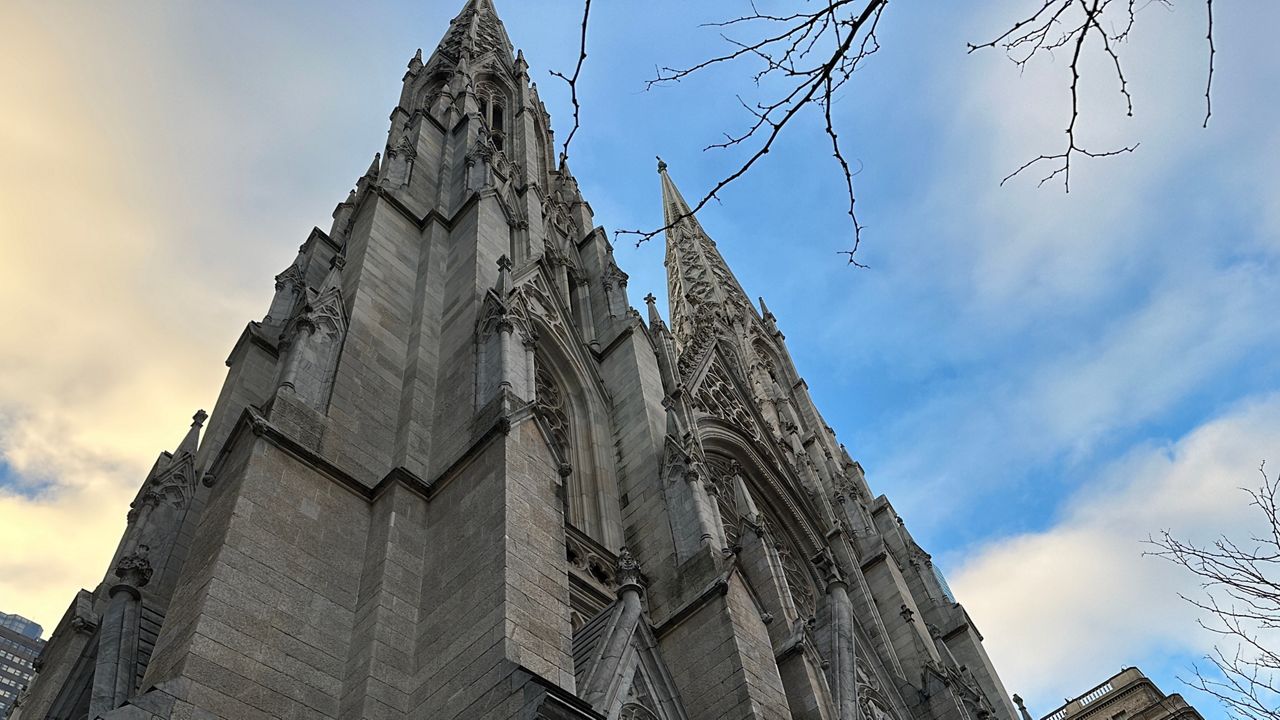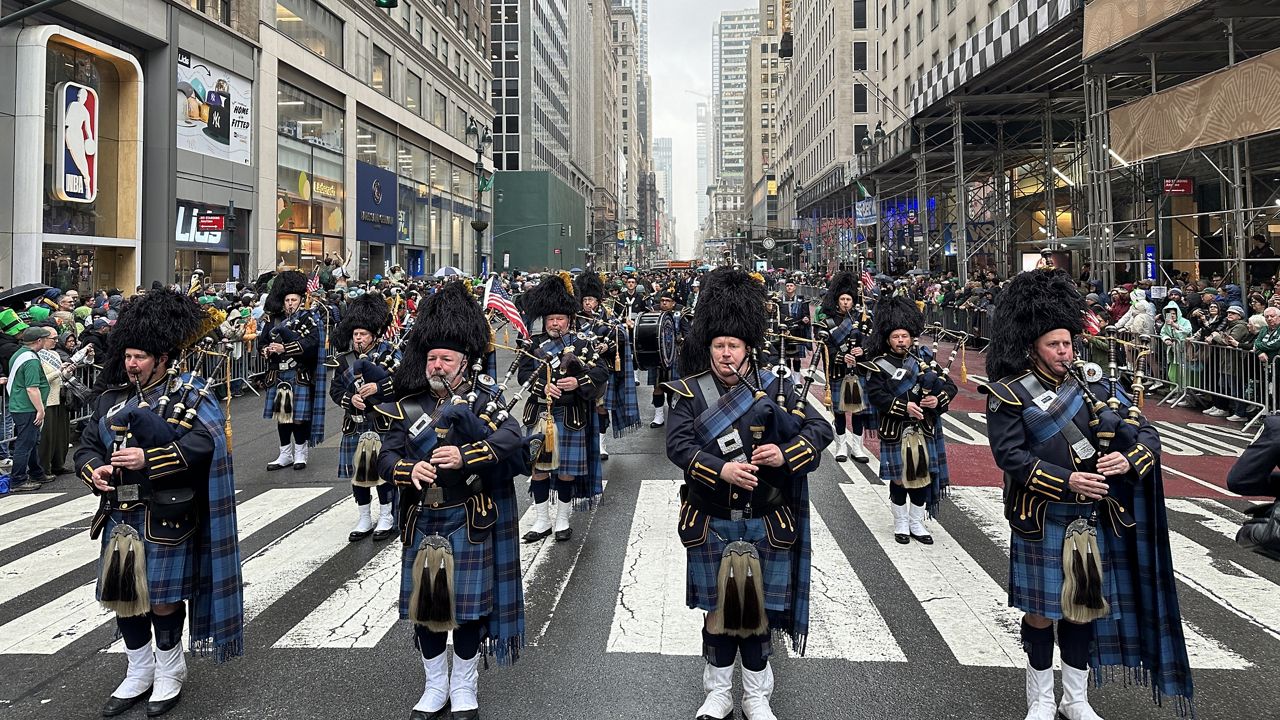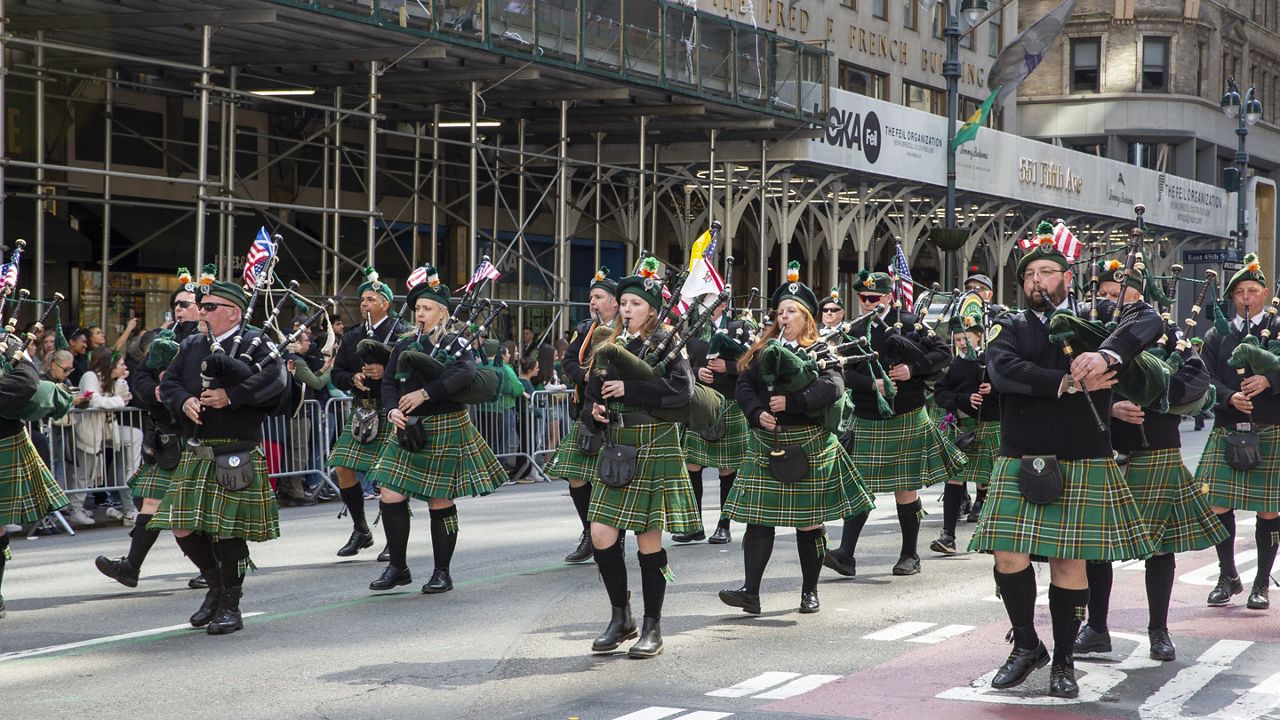If you find yourself on the Upper West Side in the evening and you hear a hoot, look up! You may get a glimpse of the world’s most famous owl atop an apartment parapet or water tower.
“He’ll perch on one of those places and hoot for hours,” birder David Barrett said.
Feb. 2 marks the anniversary of Flaco the Eurasian eagle-owl’s escape from the Central Park Zoo. He traded in his tiny enclosure for the open skies of the Upper West Side, hunting and hooting by night, and by day, roosting in private courtyards, where NY1 got a glimpse of him in January.
“This is one of his favorite spots,” Barrett said of the quiet space.
Barrett runs the Twitter account @BirdCentralPark, better known as Manhattan Bird Alert, and is one of the birders whose near daily photographs have kept Flaco fans around the world rapt with this raptor’s tale of freedom and survival.
“People love to look at photos and videos of Flaco, and his fans, of which there are many around the world, want to get information on him, they want to know what he’s up to every day, where he’s been,” Barrett said.
Flaco escaped through a hole cut in his enclosure by vandals who have not been identified. He was soon spotted near the park by birders, including David Lei, who snapped a photo of him staring at the Bergdorf Goodman department store.
“I was immediately struck by his beauty. But he was very alert. You could tell that he was uncomfortable and upset,” Lei said.
Flaco is 13 years old and had lived his entire life in captivity. He had never flown far, let alone hunted for his food. The zoo tried to catch him, but Flaco didn’t take the bait.
Birders like Lei and Jacqueline Emery worried about him at first.
“He was an awkward flier,” Emery said. “I was concerned that he would not be able to hunt for himself. But early on, we witnessed him swooping down. He didn’t catch anything. But we knew that was the beginning of his attempt to hunt. And once he started hunting for himself, it was a game-changer.”
Assured he could feed himself, the zoo ultimately agreed to let Flaco be free, and he spent the next nine months living and hunting rats in Central Park. He favored certain trees, but also perched on construction sites and landmarks like the Summer Stage.
“He gave us a concert one day, he was up at the top of the tree and he was really hooting like an opera singer in front of a big crowd on Summer Stage,” birder and photographer Stella Hamilton said.
But in November, Flaco disappeared. Birders couldn’t find him for days. Nearly a week later, Barrett got a tip — he was in the East Village.
“Close to six miles away from where he had last been seen in Central Park,” Barrett said.
Nobody can know for sure why Flaco left the park, but like many young New Yorkers, he may have headed downtown looking for love. November is mating season, after all.
“We know Flaco’s the only Eurasian eagle owl in all of North America in the wild. So sadly, he can’t find a mate. But he doesn’t know that,” Barrett said.
Don’t be too heartbroken: Owls are mostly solitary and he didn’t have a mate at the zoo. Barrett says Flaco is clearly happier as a free bird.
“He’s living a purposeful life,” he said.
By mid-November, Flaco made his way back uptown. But he didn’t stay in Central Park for long. He began his new routine of cruising the Upper West Side’s rooftops and courtyards, where he’s better insulated from bullies like crows, which team up to harass him as a defense mechanism.
“I think Flaco somehow realized when he left Central Park that he didn’t have to put up with that anymore,” Barrett said.
A year later, his survival story still amazes those who photograph him often.
“I remember seeing Flaco in Central Park Zoo,” Keiko Komiya said. “And he didn’t move. He just opened his eyes. And he’s sitting on his branch, like a statue.”
But these days, he’s flying high.
“He is very beautiful and strong. He learned how to survive,” Komiya said.
“I think it’s one of the best survival stories of all time,” birder and photographer Paul Beiboer said, noting there’s been interest in Flaco even back in his native Netherlands.
“Nobody expected him to be able to hunt or survive on his own,” Lei said. “And I think people just loved that he proved them wrong.”
Through the photographs these birders have taken, and their diligent work to keep tabs on him, Flaco’s story has also enthralled countless New Yorkers, who just might see a little bit of themselves in this plucky bird.
“I think it’s his resilience,” Emery said. “He’s shown us time and time again that he can figure things out. And I think people respond to that, they connect with that, you know, having to overcome obstacles, being considered, like, the underdog. He’s a survivor. And New York City is full of survivors.”







